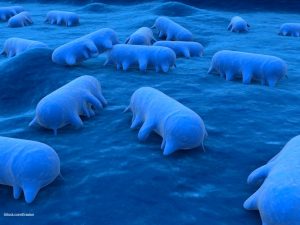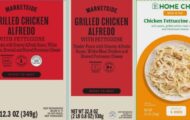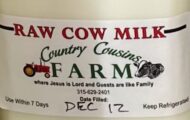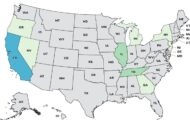This last spring and summer, there was a large outbreak of Salmonella Bareilly linked to raw scraped tuna called Nakaochi Scrape imported by Moon Marine USA Corporation. The product was used in sushi sold at restaurants and grocery stores across the country.

On April 4, 2012, the Centers for Disease Control and Prevention announced the outbreak, with 93 people sickened in 19 states and the District of Columbia. Two days later, the outbreak grew to include 100 people. The age range was from 4 to 78 years, with 47% of the patients being female, and 10 people hospitalized. The outbreak continued to grow rapidly. On April 11, 2012, 16 more patients were added to the outbreak total.
On April 13, 2012, the CDC announced that frozen raw yellowfin tuna was the likely source of the Salmonella outbreak. Eighty-one percent of patients questioned ate raw tuna the week before they became ill. Since only about 5% of the population eats sushi, sashimi, or ceviche made with raw fish, this number is significant. Seven clusters of ill patients were reported in five states: Connecticut, Maryland, Rhode Island, Texas, and Wisconsin. On that day, the FDA announced a recall of 58, 828 pounds of Nakaochi Scrape. It was sold as “spicy tuna” around the country.
Four days later, the outbreak grew to 141 people in 20 states and the District of Columbia. Twenty one people were hospitalized. No deaths were reported. On April 20, 2012, the CDC announced the case count was 160 people, with 26 hospitalized and no deaths. An inspection was conducted at the Moon Fishery Pvt Ltd. facility in Aroor, India in April 2012. Several deficiencies were discovered, including lack of controls for Clostirdium botulinum at storage and significant sanitation violations.
Another bacteria was added to the outbreak investigation in April. Salmonella Nchanga had sickened 10 people in the United States. This outbreak was combined with the Salmonella Bareilly outbreak, since half of the patients reported consuming raw sushi called “spicy tuna” the week before becoming ill. FDA labs matched the two types of Salmonella from raw tuna samples to bacteria from patient stool samples.
The outbreak continued to grow rapidly. By May 2, 2012, the case count was 258 patients. Of that group, 247 were sick with Salmonella Bareilly, and 11 sick with Salmonella Nchanga. Thirty two people were hospitalized, and no deaths were reported. On May 10, 2012, Moon Fishery expanded its recall to include raw tuna strips because of possible Salmonella contamination. Lab testing found the outbreak strain of Salmonella in intact packages of frozen yellow fin tuna scrape from Moon Marine USA Corporation.
On May 17, 2012, the outbreak grew to include 316 patients; 304 sick with Salmonella Bareilly and 12 sickened with Salmonella Nchanga. Thirty-seven people were hospitalized, and no deaths reported. By July, the outbreak was declared over. The final case count included 425 patients, with 410 sickened with Salmonella Bareilly and 15 sickened with Salmonella Nchanga. Fifty five people were hospitalized in this outbreak.
The case count was as follows. For Salmonella Bareilly: Alabama (5), Arkansas (1), California (8), Colorado (1), Connecticut (11), District of Columbia (3), Florida (1), Georgia (20), Illinois (30) Indiana (1), Kansas (1), Louisiana (6), Massachusetts (36), Maryland (39), Missouri (4), Mississippi (2), Nebraska (2), North Carolina (12), New Hampshire (2), New Jersey (39), New York (62), Pennsylvania (37), Rhode Island (6), South Carolina (5), Tennessee (4), Texas (14), Virginia (33), Vermont (1), and Wisconsin (24). For Salmonella Nchanga: Georgia (2), Maryland (1), New Jersey (3), New York (6), Texas (1), Virginia (1), and Wisconsin (1).




